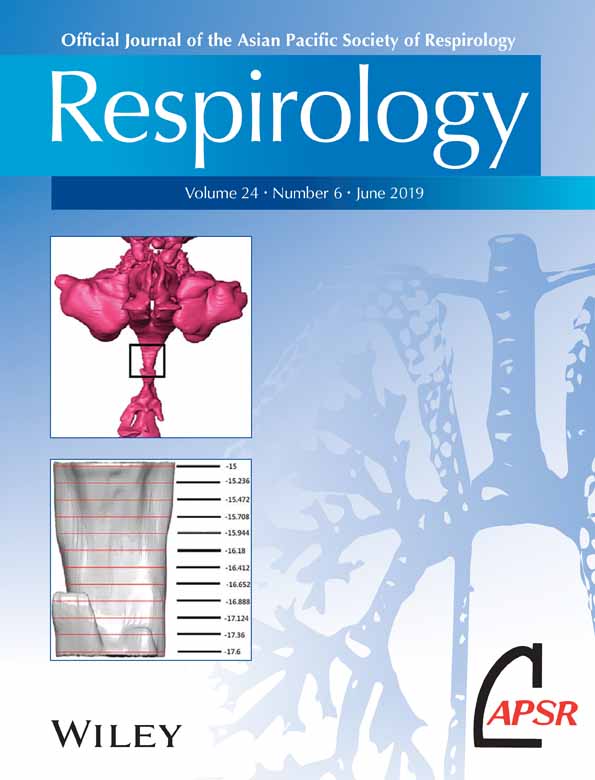Airway distensibility: Bringing physiology to the bedside – Reply
Abstract
See Letter
From the Authors:
We thank Professor Wellman for his interest in our manuscript ‘Pharyngeal distensibility during expiration is an independent predictor of the severity of obstructive sleep apnoea’. We note his suggestion of a metric to represent the collapsibility/extensibility as: ‘division of the absolute change in area by the absolute change in flow’. That is, using the difference of flow (Q) and area (A) instead of the percentage of changes, collapsibility/extensibility = (AQmax − AQ1)/(Qmax − Q1) instead of (AQmax − AQ1)/AQ1/(Qmax − Q1)/Q1.
This suggested metric is easier but in our view, it is not adequate in this context. Flow (Q) will be affected by the anatomy and mechanical properties (calibre, shape, collapsibility, laminar or turbulent) of the airway.1 The airway size (A) is also affected by a person's height, gender or ethnicity. To avoid these confounding factors, the differences of flow (Q) and area (A) should be divided by the basic flow (Q1) and basic area (A1). For example, a tall male with a large basic airway with small changes in the relevant measurements may have the same difference as a short female who has a smaller basic airway. In this scenario, the short female definitely has higher changes in distensibility and more severe sleep apnoea.
We agree that when we choose the point for calculation, we should avoid the point of zero flow although the data seldom, if ever, approach this threshold (as shown in Figs 1 and 2 of our manuscript).2 Professor Wellman also suggests the pressure difference as a more precise measurement. We agree it is better, but as Professor Wellman noted, it involves the insertion of a pressure monitor which is not feasible in clinical practice.
We also thank Professor Wellman for strengthening our observations with the reference from Genta et al.3 Our study described a method to measure the severity of sleep apnoea but we also sought to demonstrate the interaction of physiology and anatomy in the pathogenesis of sleep apnoea.
Finally, we also agree that if the technology improves, this method could be easily applied to clinical practice. Although magnetic resonance imaging (MRI) and computed tomography (CT) are not practical in a clinical setting, real-time ultrasonography has been reported in one study.4




